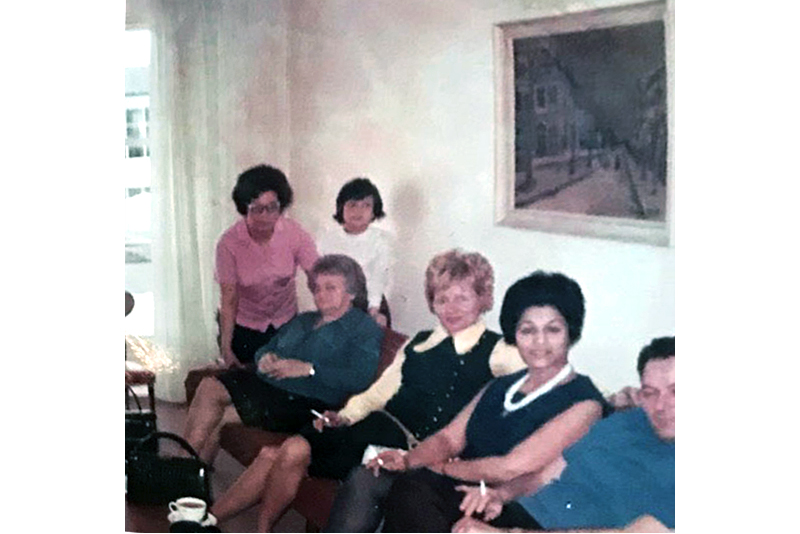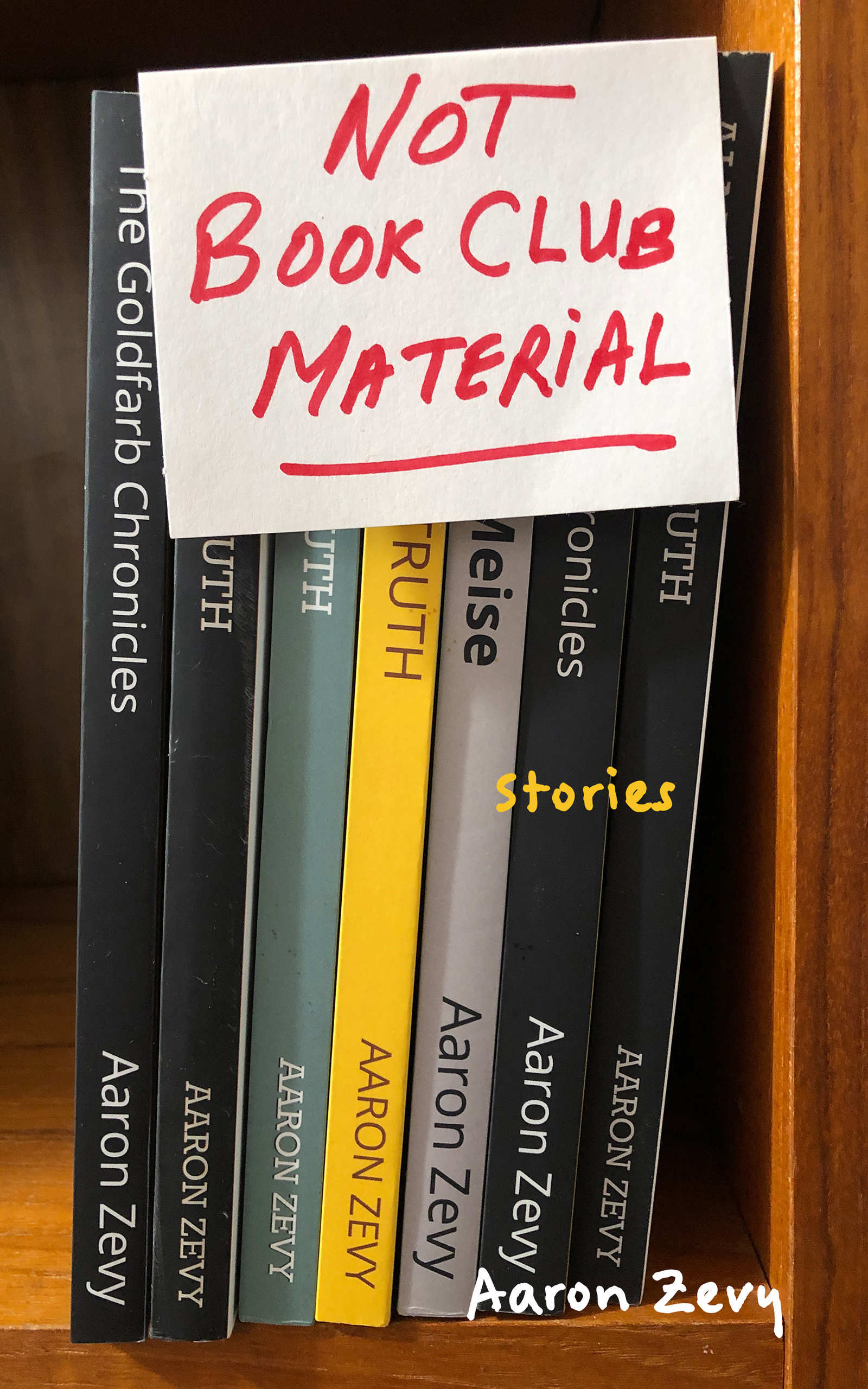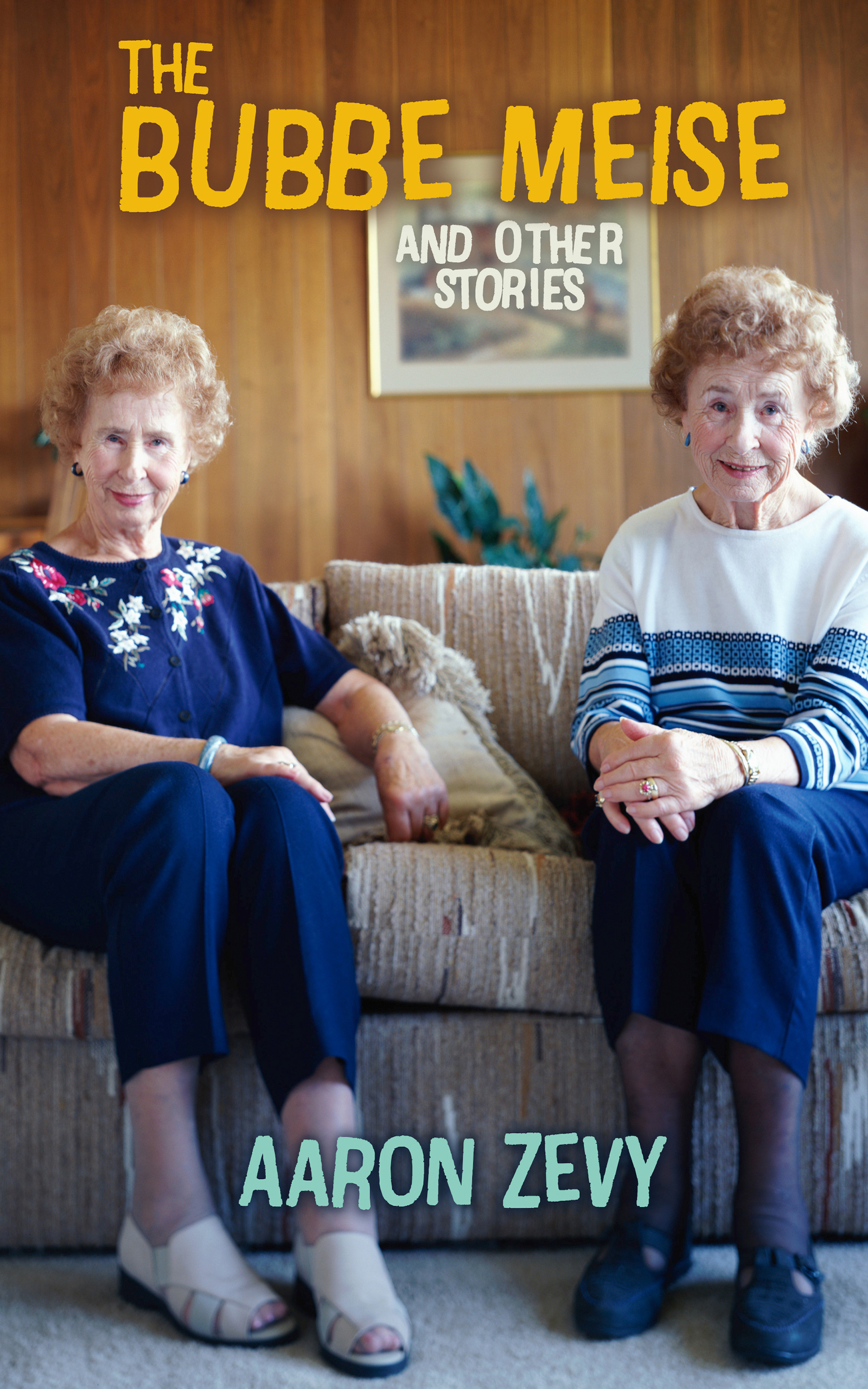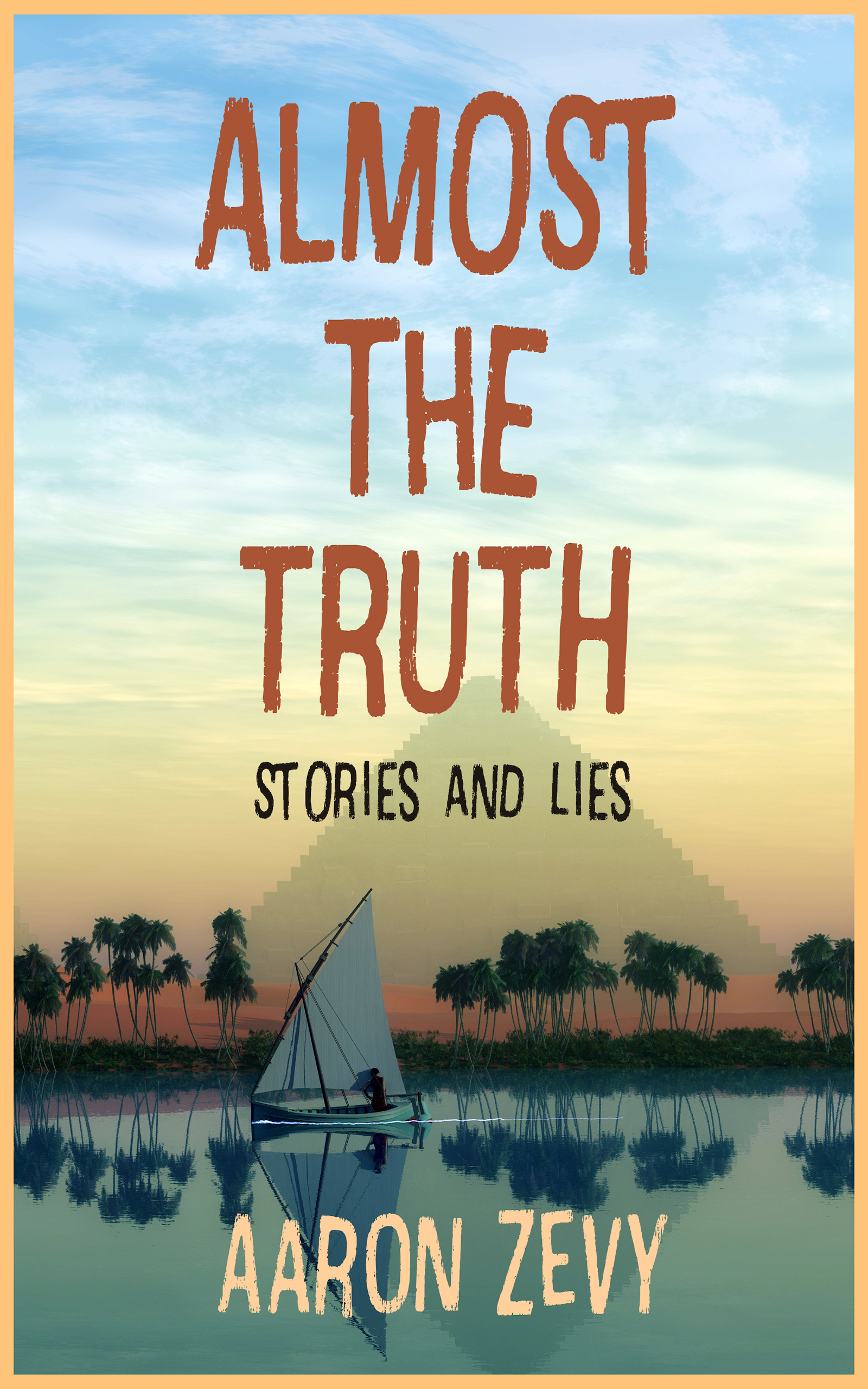That is a picture of my mom, my sister, my Nona, my uncle Henri, and Tante Nandi, and Tante Joel circa 1970. I would have been 11. It is the living room of our house in Montreal. Look closely and you can see that uncle Henri, and both aunts, have cigarettes in their hands. An extra chair has been dragged from the kitchen so it must have been a party. A birthday maybe? I can see snowbanks out the window so that rules out my sister’s or my May birthdays. My brother’s is in March. Or maybe a Jewish holiday? Don’t know. Doesn’t matter.
I want you to focus instead on the painting above the sofa. It is a reproduction of a painting by turn-of-the-century French painter Maurice Utrillo.
I’m going to guess that none of you, even those with Art History degrees, will have heard of Maurice Utrillo. I am not being judgemental. There is no reason you would have. He was a second-tier, post-impressionist painter who specialized in scenes of the Paris neighborhood Montmartre. I don’t know what this painting is called.
Not sure if you can really make it out. It is nice enough.
Now here’s the thing about Utrillo. Even though he was considered a minor French painter, he still merited a paragraph in the 1970 World Book Encyclopedia.
The Encyclopedia was the internet before the internet.
Am sure there were many different types of encyclopedias. But really, there were only two that mattered: World Book Encyclopedia and Encyclopedia Britannica.
Before I continue, I need to talk about running shoes. In my day, and we don’t need to get specific about what day that was, there were two choices for running shoes. Or, sneakers, should you be reading this south of the border.
The kids with money wore Adidas Rom—three stripes—the rest of us wore North Stars—two stripes.
That just about says it all.
Our world divided by how many stripes we had on our sneakers.
The World Book Encyclopedia was the two-stripe encyclopedia. Nevertheless, we had the entire collection, every letter, and it even included the 1970 year-in-review supplement.
And right there. Towards the end of the already slim volume for the letter U, was a paragraph about Maurice Utrillo.
I no longer have access to the 1970 World Book Encyclopedia, but I can Google him. Here is what Wikipedia, which, to be fair, is largely regarded as a two-stripe or, dare I say, one-stripe internet resource, says about Utrillo.
“Maurice Utrillo, born Maurice Valdon (1883-1955) was a French painter who specialized in cityscapes. Born in the Montmartre quarter of Paris, France, Utrillo is one of the few painters of Montmartre who were born there.”
Here is what Artnet says:
“Maurice Utrillo was a French artist noted for his naive yet picturesque cityscapes. Rendered in thick troweled paint, the artist portrayed the winding streets and alleyways in the Montmartre neighborhood of Paris.”
Am not sure what the World Book Encyclopedia said. I suspect it was somewhat prosaic and would not have said “naive yet picturesque.” But still. Whatever it did say, it devoted an entire paragraph.
So, when I told friends we owned an original Utrillo, I had the World Book Encyclopedia to back me up. After all, who would doubt the authenticity of a painting by a painter they had never heard of? Not sure who the ten-year-old me was trying to impress. The rest of the house was two-stripe all the way. Still, it was my story and I was sticking to it.
We moved to Ottawa in around 1973. If the Utrillo came with us I really have no idea. If it hung on a wall, I don’t remember. I have no pictures of our house in Ottawa save for one of the exterior. Utrillo, and his naive yet picturesque renderings, no longer figured in my life. Until university.
There is an art fair at the university commons the first week of school. They are selling prints for $5. Buried beneath one of the stacks of prints of French impressionists, I find an Utrillo.
Sacre Couer en Hiver.
Here is a picture of it.
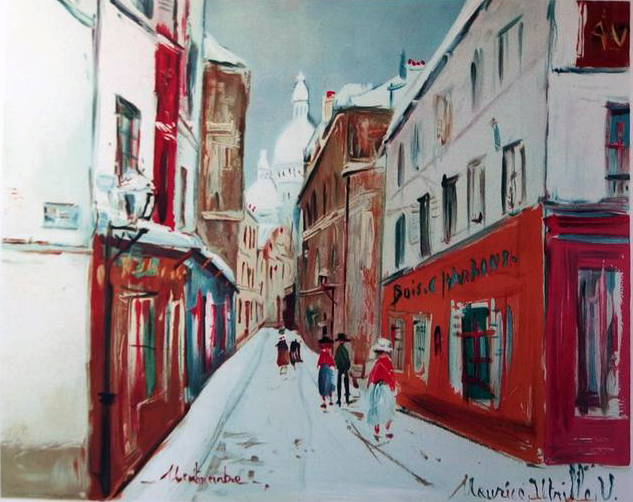
I tape it up to the wall of my dorm room.
Is it a piece of home?
Don’t get carried away. It is a print. I like it.
I’m only in the dorms for a year. My parents are back from Singapore. Does the Utrillo print make it to my bedroom? Side by side with who, Farrah Fawcett? No clue. No recollection. Do I bring it with me when I move to Toronto? Again. No clue. Unlikely.
That should end my Utrillo story, but I find myself in Paris one summer and visiting her famed museums is de rigeur. At the Orangerie, I come face to face with my first original Utrillo. I wonder how many more in the museum. I wonder how many more in the city. I look at my watch. It is still relatively early. I am in the city alone. I don’t need anyone’s approval for my plan: a day-long scavenger hunt trying to find as many Utrillos as I can. The Orangerie and Jeu de Paum are treasure troves, and I am able to pad my numbers from the get-go. But then I am adding ones and twos. I race through the Louvre with barely a sideway glance at the Mona Lisa and her throngs of Japanese tourists. I only have eyes for Maurice. I end the day with 22. I am alone and have nobody to high five but I am pretty pleased with myself.
I never repeat the scale of my scavenger hunt in subsequent visits, but I also never forget to look for Maurice whenever I am in Paris.
In 2009 I am in Israel for Passover and decide to make Paris my stopover on my way back to Toronto. My friend Carainn, her Irish background explains the unorthodox spelling of Karen, is on sabbatical, ostensibly, to learn French.
Carainn, though lovely and charming, does not have the gift of language. It has been three months and she has made no progress. I assume she has been skipping classes in order to go shopping but no, she assures me that she calls out “ici” every morning when attendance is taken. She does not seem the least bit perturbed by her lack of proficiency. She is loving the city and revels in showing me the sights.
The next day, Carainn is in class and I decide to go look for Maurice. I call the Musée de Montmartre and enquire about Utrillo. They have none. “The museum is closed today, Monsieur.” And besides, don’t I know there is an Utrillo and Suzanne Valadon (Utrillo’s painter mother) exhibit at the Pinacotheque Museum?
This is what she says.
But what she means is:
Are you some kind of fucking moron?
I was.
And I am.
Carainn is a good sport. She is only too happy to go to the exhibit with me.
“How long is this going to take?”
This is Carainn being a good sport.
The Pinacotheque was an art gallery with exhibition space. It closed in 2016, but in 2009 it had the Utrillo/Valadon exhibit. Utrillo, it turns out, was an alcoholic who spent some time in an insane asylum. The exhibit was set up as a serpentine path with a start and finish. You couldn’t wander around at your leisure. Nor could you really double back.
Anyway, it is a pretty cool exhibit and I kinda like that it has some structure. Carainn has rented the audio tour and, as a result, is spending a lot more time in front of each painting than I really care to.
And I do like the Utrillo. But all of it in one place is a bit overwhelming. It takes away from the charm of finding the occasional piece from time to time. He was my own personal two-stripe artist with only one paragraph in the World Book Encyclopedia, and now everyone knew about him. And Jesus, Carainn was taking so much damn time in front of each painting. I mean, it was cool. I was enjoying it. I think.
And then I turned the corner, and there it was. The painting from my living room. I looked for my family but I couldn’t see them. Couldn’t see anything through the tears in my eyes. Carainn caught up to me and began telling me the story about the insane asylum but stopped when she saw my face.
“Nice painting,” she says.
“It’s a good forgery,” I reply, wiping away my tears. “My parents owned the original.”
The end.

